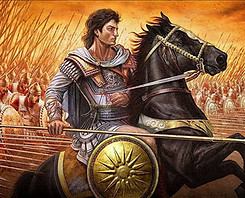Blog about
travelling
Central Asia known for its dramatic landscapes and unique climate, it promises an unforgettable adventure. Explore ancient Silk Road cities, trek breathtaking mountain passes, or immerse in vibrant nomadic traditions.
Ancient buildings
The Silk Road: Legendary Path Connecting East & West
The Great Silk Road is the most famous trade route in human history. It linked Europe and Asia, allowing nations to establish trade, exchange religious and philosophical teachings, and foster diplomatic relations. The name "Silk Road" appeared in European historiography in the 19th century, as silk was one of the main treasures transported by Eastern merchants. The Great Silk Road began in the 2nd century BC. Before this time, routes from Europe to Asian countries ended at the borders of China, as the mountain ranges of Asia shielded the ancient and rich Chinese civilization from the world.


The opening of the vast western direction was helped by chance. One of the first Europeans to delve deep into the East was Alexander the Great. In the 4th century BC, his armies forged a path from Southern Europe to the countries of Central Asia. Movement also came from the east. A decisive role was played by the ancient Chinese official Zhang Qian. In the 2nd century BC, he embarked on a dangerous diplomatic mission to the nomads of Central Asia to convince them to ally with the Chinese Empire.
There, he learned of the immense demand for Chinese goods and saw many items unknown to the Chinese. The path he forged merged with the route traversed by Alexander the Great, resulting in a vast unified road spanning all of Asia. Although the routes of the Silk Road changed over time, two main routes connected the East and the West. The southern route linked China with the Middle East and northern India, passing through Tajikistan, Uzbekistan, Kazakhstan, and Kyrgyzstan. The northern route connected northern China with the lower Volga and the Black Sea, passing through the Pamirs and the Ural region.


The maximum length of the route was about 10,000 kilometers. Each day, a trade caravan had to cover about 25 kilometers. Thanks to the legendary route and intermediary trade, many cities such as Derbent, Bukhara, Samarkand, Urgench, Chersonesus, and Olbia flourished.
The Invaluable Role of Chinese Silk and Luxury Goods on the Great Silk Road
Chinese silk was the top commodity on this list. The significance of the Great Silk Road for China was simply invaluable. Due to itslightness, compactness, enormous demand, and high cost, it was an ideal trade item for long-distance transportation . In Europe, it was sold for more than gold.
Beyond Commerce: The Silk Road's Cultural Tapestry
The Silk Road not only facilitated trade but also cultural exchange among nations. Through it, religious teachings, philosophical, and scientific ideas spread. The Chinese received goods like horses, grapes, carpets, and perfumes from Central Asia. In return, China exported porcelain, bronze items, tea, rice, and other goods. The route was not just a trade artery but a way to bring cultures and peoples closer.

Along the route, new cities emerged, roads, inns, and warehouses were built. The successful operation of trade caravans required political stability. Throughout its history, there were three periods when the route was almost entirely controlled by a single state: the Turkic Khaganate, the Mongol Empire under Genghis Khan, and Tamerlane's Empire.

The Fall of the Great Silk Road and Its Lasting Impact
The Great Silk Road became obsolete in the 15th century during the era of maritime exploration. It was much faster to transport goods from Asia to Europe by ship via the Persian Gulf. Land routes fell out of favor, and Central Asia ceased to be a crossroads of civilizations. After existing for one and a half thousand years, the Great Silk Road finally ceased to exist in the 16th century. However, caravan trade between Central Asia and China continued until the 18th century. Nevertheless, many testimonies of its heyday remain. Once, vast caravans carrying ivory, gold, furs, and other goods
followed Asian routes. Through trade connections, cultures and peoples came closer together, creating a history that preceded the present.



